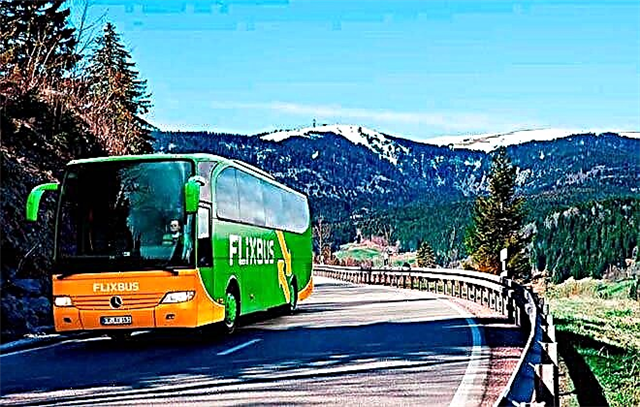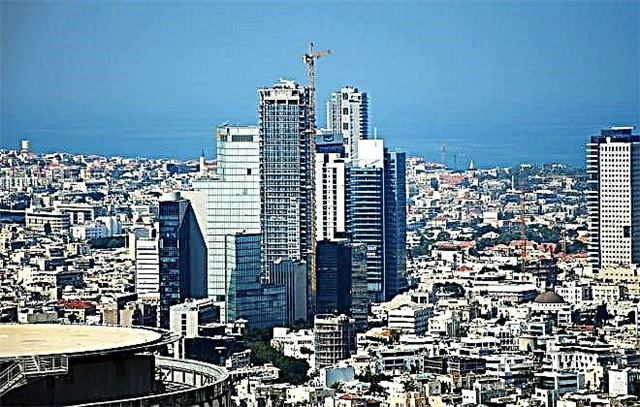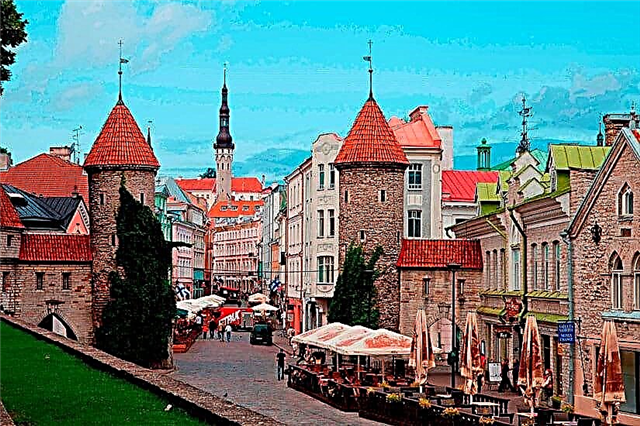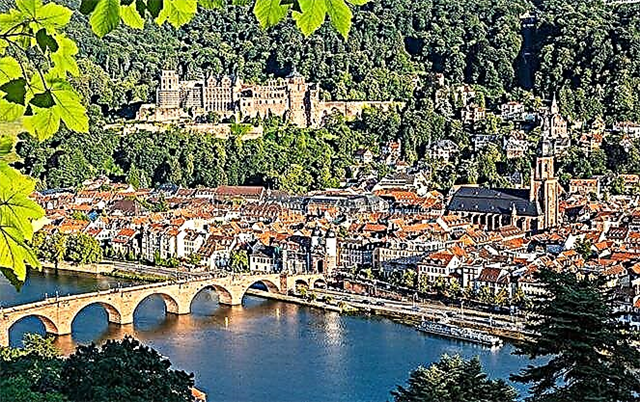Fans of European architecture of the 18th century are invited to visit an unusual city in Germany - Heidelberg. Here, tourists can enjoy the beautiful nature on the banks of the Neckar River, which surrounds ancient historical buildings, and join culture and science, inspired by the greatness and power of the medieval kings. Visiting temples, cathedrals and mosques in Heidelberg, you will get a lot of impressions from the contemplation of architectural monuments and walks through the old Gothic streets of the city.

The beauties of Heidelberg
Heidelberg is a small but very colorful city in Germany. It is located in the south, so there is a warm climate, atypical vegetation and animals. If you look at the city from a bird's eye view, unrivaled views of the Gothic narrow streets and an extraordinary beauty of the bridge open up.
The oldest university in Germany named after Rugrecht and Karl is located in Heidelberg.
Since there are many other educational institutions, Heidelberg is considered a city of students. For this reason, culture is developing well: there are 11 theaters, 20 museums and cultural centers.

True, many tourists want to see all the beauties of Heidelberg at once: the calm colors of nature, the unhurried flow of the river, ancient architecture, and the unusual terrain.
Church of the Holy Spirit
This is the largest and most important temple in Heidelberg. The church is located in the old town and, together with the octagonal tower of the castle, forms the image of the area. The building is built of red sandstone with baroque domes and roofs. This unique structure of high artistic quality is the city's most attractive landmark.

The first mention of the Church of the Holy Spirit dates back to the 18th century, but its foundation dates back to 1398. Since its inception, the church has rightfully become the center of the city's religious, scientific and cultural life. The main attractions of the church include:
- the grave of Elector Ruprecht III - the only surviving burial in the temple after the devastating war for the Palatinate inheritance;
- medieval wood carved pulpit;
- a memorial plaque with a list of the Brotherhood of Christians.
For several centuries, the church was divided by a wall between two communities: the Evangelical and the Catholic. But today the Church of the Holy Spirit preaches only the evangelical trend. The church hosts religious services, various cultural events, organ music concerts.
The Church of the Holy Spirit in Heidelberg has been a significant tourist attraction for many years to this day. It has a convenient location in the old part of the city near the Old Bridge. This landmark is surrounded by numerous cafes and restaurants.
Jesuit Church (Jesuitenkirche)
The church was built in 1749 and was the center of the Jesuit quarter in the city. Although it is not the oldest in Heidelberg, it is quite popular. The reason for this is the dominant position of the Jesuits after the Counter-Reformation.
The building of the Jesuit church is the largest in the city, decorated in the Baroque style.
Outside, the church surprises with its architecture, the outer walls are built of pink stone. Inside, the church has a strict interior in white and gold tones with excellent proportions. The main room is decorated with a beautiful organ.
The main building is surrounded by a small but very colorful courtyard. Next to the church there is a Jesuit gymnasium, where many students are educated.
St. Peter's Church
This is the oldest temple in the city. The church was built for a Catholic parish, but today it is Lutheran. The building dates back to the XII-XIII centuries, although the attraction is not always included in tourist routes, and its main competitor is the Church of the Holy Spirit. However, true fans of ancient architecture will appreciate this medieval monument.

St. Peter's Church has been a university chapel for many years. On its territory, there are 150 burials of scientists, rectors and professors who worked at the university. A half-century oak tree planted in honor of Martin Luther also grows near the church.
Initially, the building was built in the style of Romanesque architecture, but over time it was rebuilt and expanded. So, in the late Gothic style, the side chapels and the southern sacristy were completed.
After the Nine Years War, the style was changed to Baroque, and the building plan was rebuilt. Contemporary artists participated in the creation of the current interior, who decorated the church with stained glass windows, paintings and sculptures.
St. Peter's Church hosts educational events and lectures. Divine services are held here on weekends and holidays.
From April to October, the attraction is open to tourists.
5 most popular attractions in Heidelberg
Seasoned tourists know that Heidelberg has many interesting places to visit. If you are interested in architecture, pay attention to the following sights:
- The old town, built in the Baroque style. The harmonious combination of the architectural ensemble is inspiring and mesmerizing. The longest pedestrian street, 1.6 km long, is located here.
- The Fountain of Hercules is a medieval sculpture located on Marktplatz street. In the Middle Ages, it served as a place for correcting guilty people.
- The Twin Towers are a symbol of the city, a visiting card of Heidelberg, which can be seen on many magnets and souvenirs. The attraction rises above the Karl-Theodor-Brücke bridge.
- Student prison, on the territory of which the museum was opened. University students who showed disobedience were serving their sentences here. The offenders were detained from 1 to 3 days, but were released for lectures and exams.
- Museum-pharmacy Deutsches Apotheken-Museum, which contains a large number of exhibits of Western European medieval pharmacology. Tourists will get acquainted with the history of pharmacy, in which Germany has always held a leading position.
Every traveler will find something interesting in this city: you can walk along the Path of Philosophers, reflecting on the eternal, or admire nature on the bridge. The city also has a zoo and many other entertainments for guests.
Conclusion
In the field of cultural and educational tourism, Heidelberg is not inferior to such large cities as Hamburg or Munich. Tourists will get a lot of impressions from visiting medieval sights, because over a thousand-year history, Heidelberg has accumulated many interesting architectural monuments. There are churches of different directions in the city, including the Orthodox one.
The big advantage is that the city survived the Second World War. Therefore, the cultural center remained untouched and all the most important historical sights survived and delight travelers in 2021. In addition to tourist excursions, the city regularly hosts holidays and festivals.











